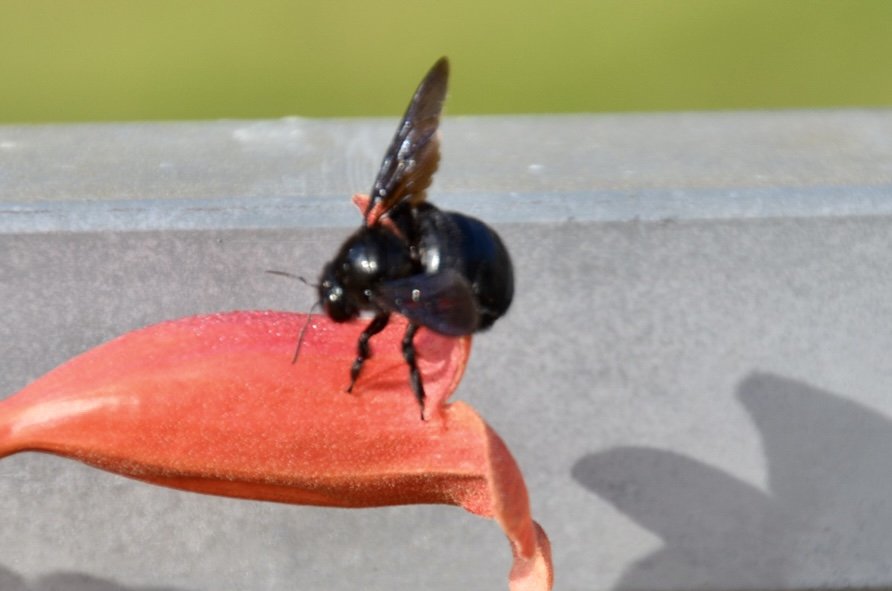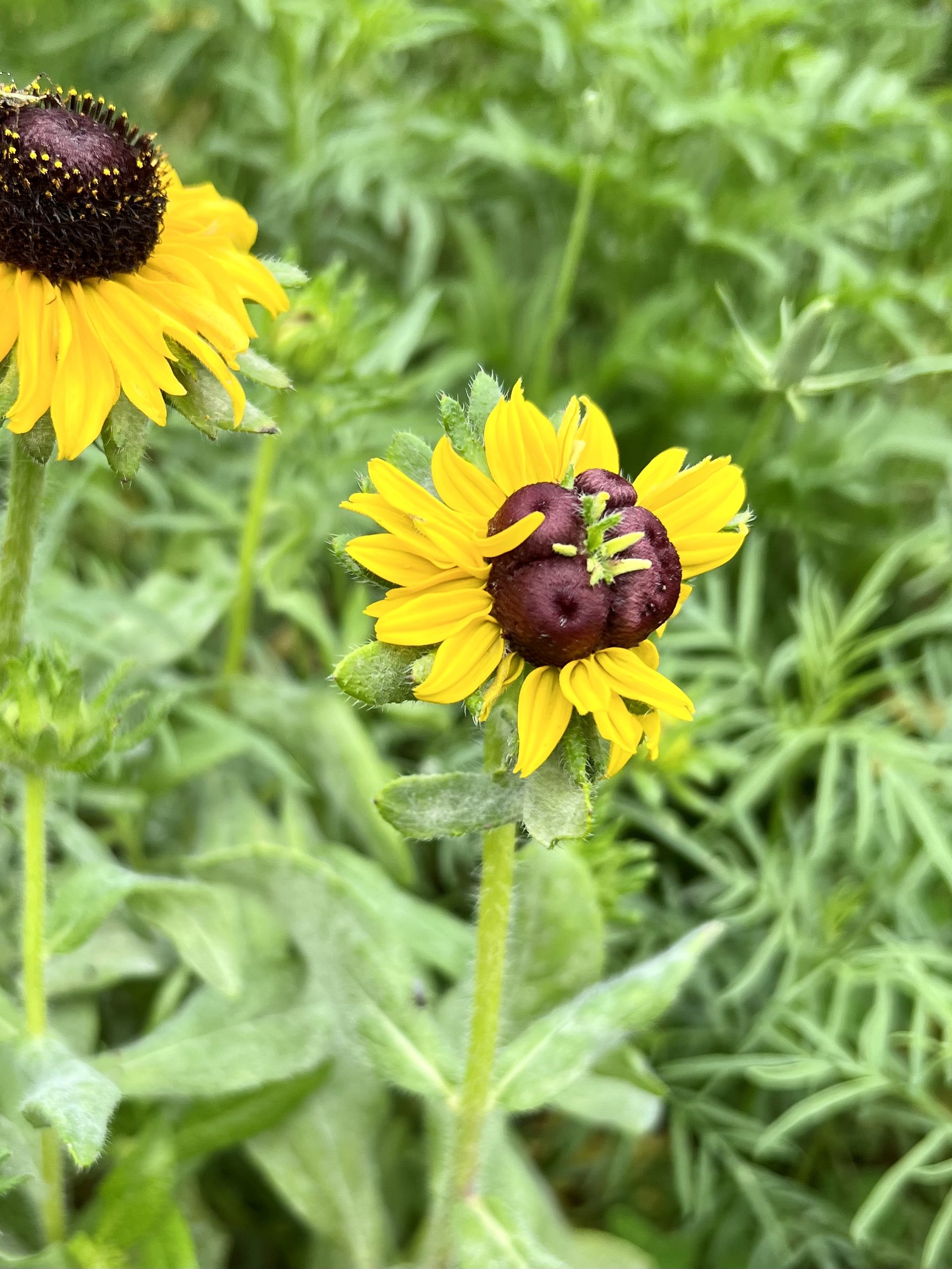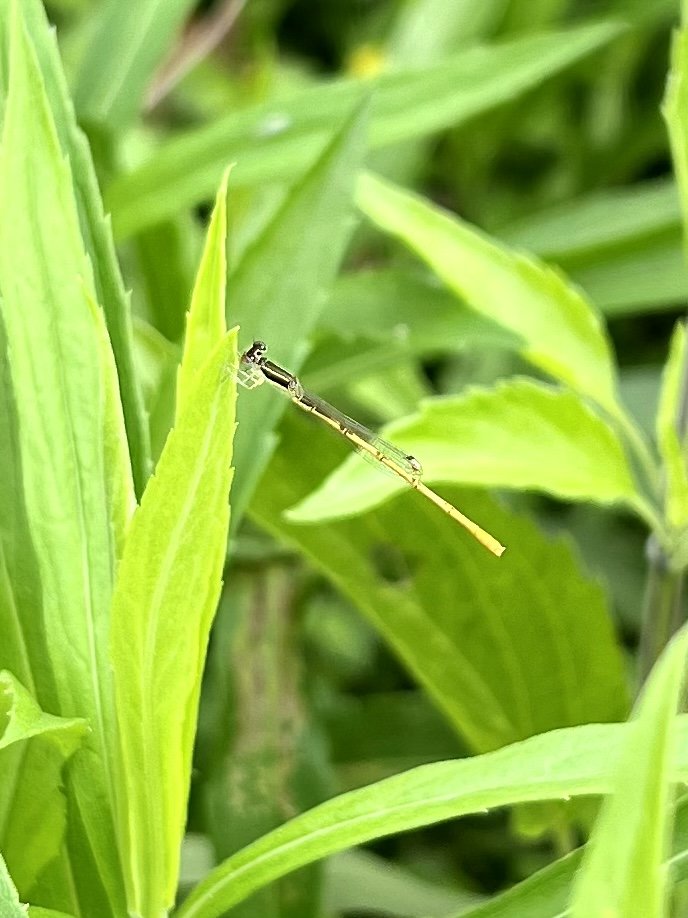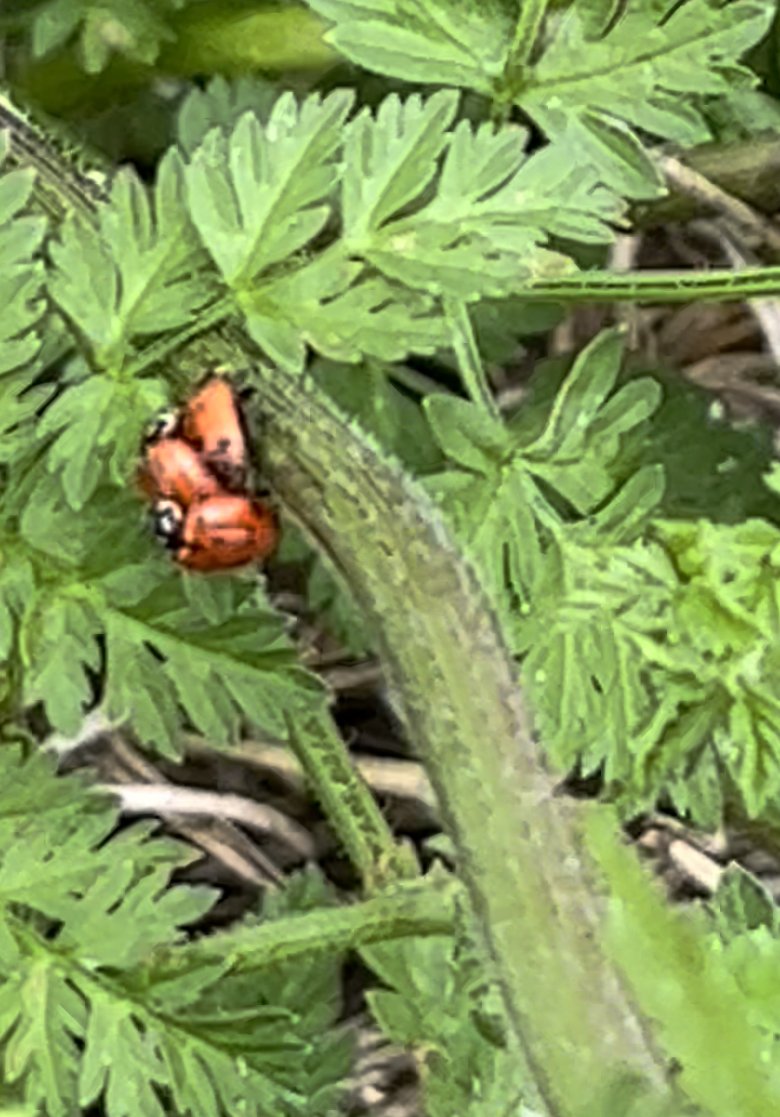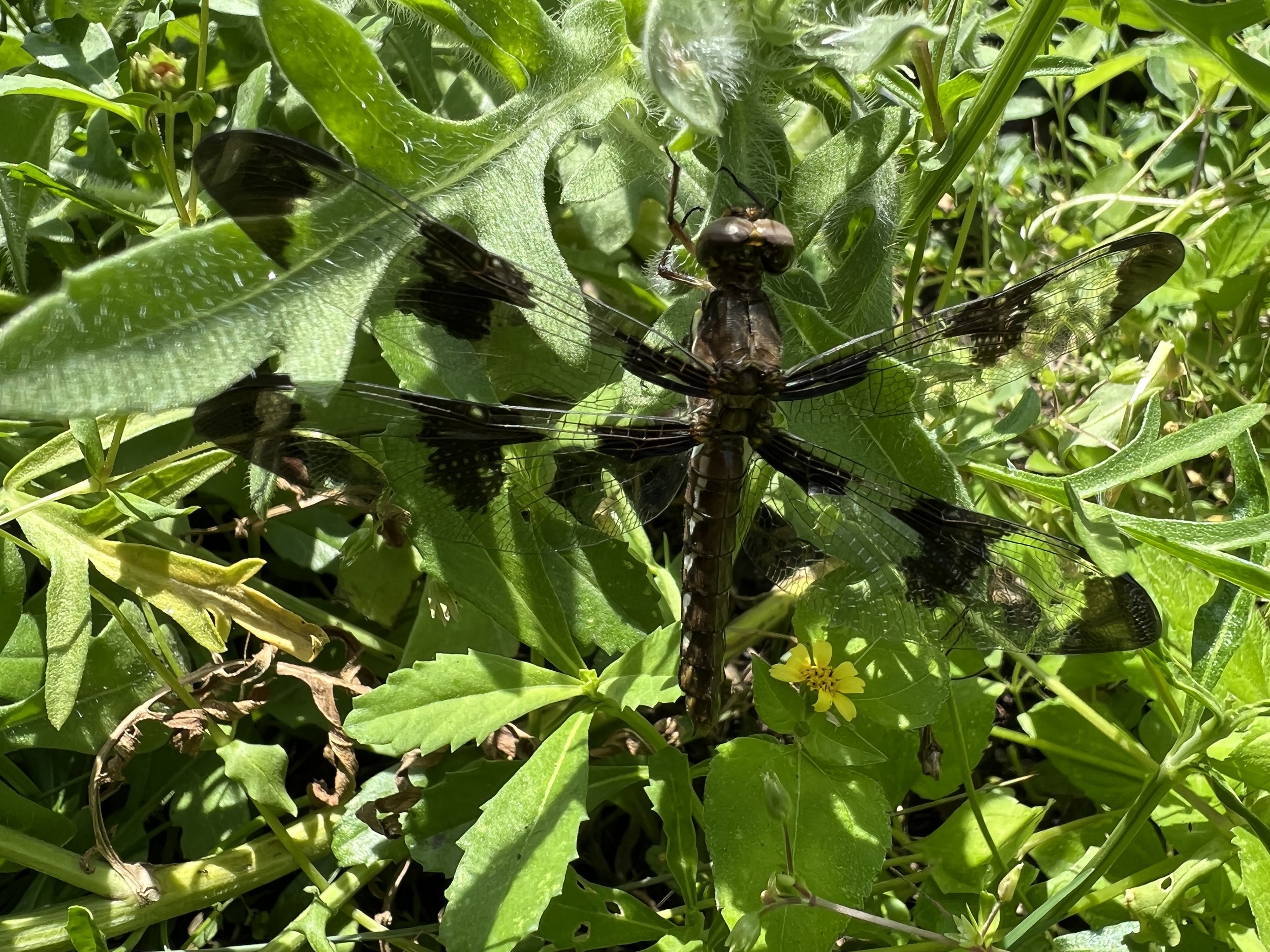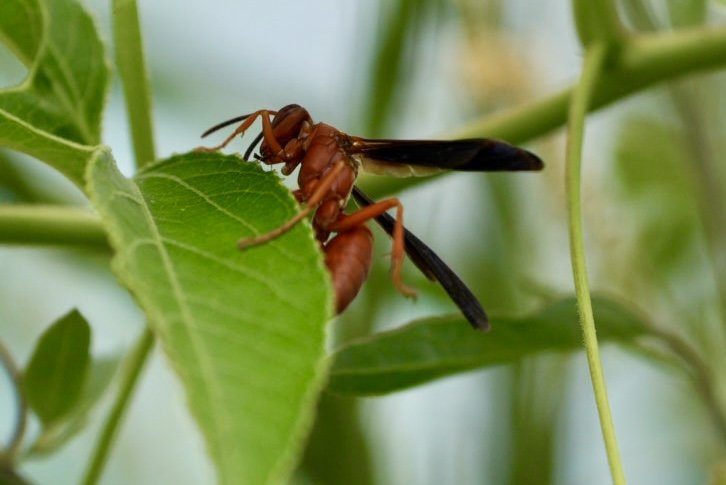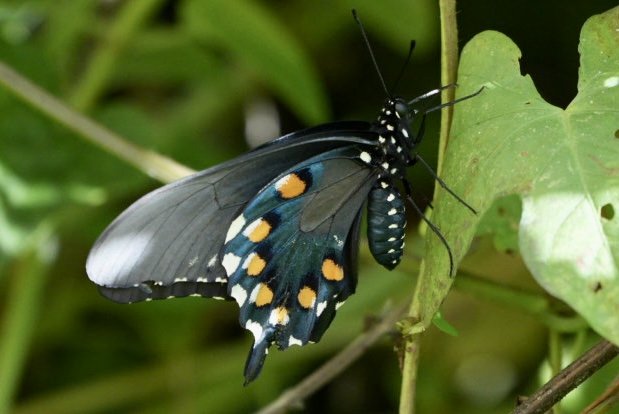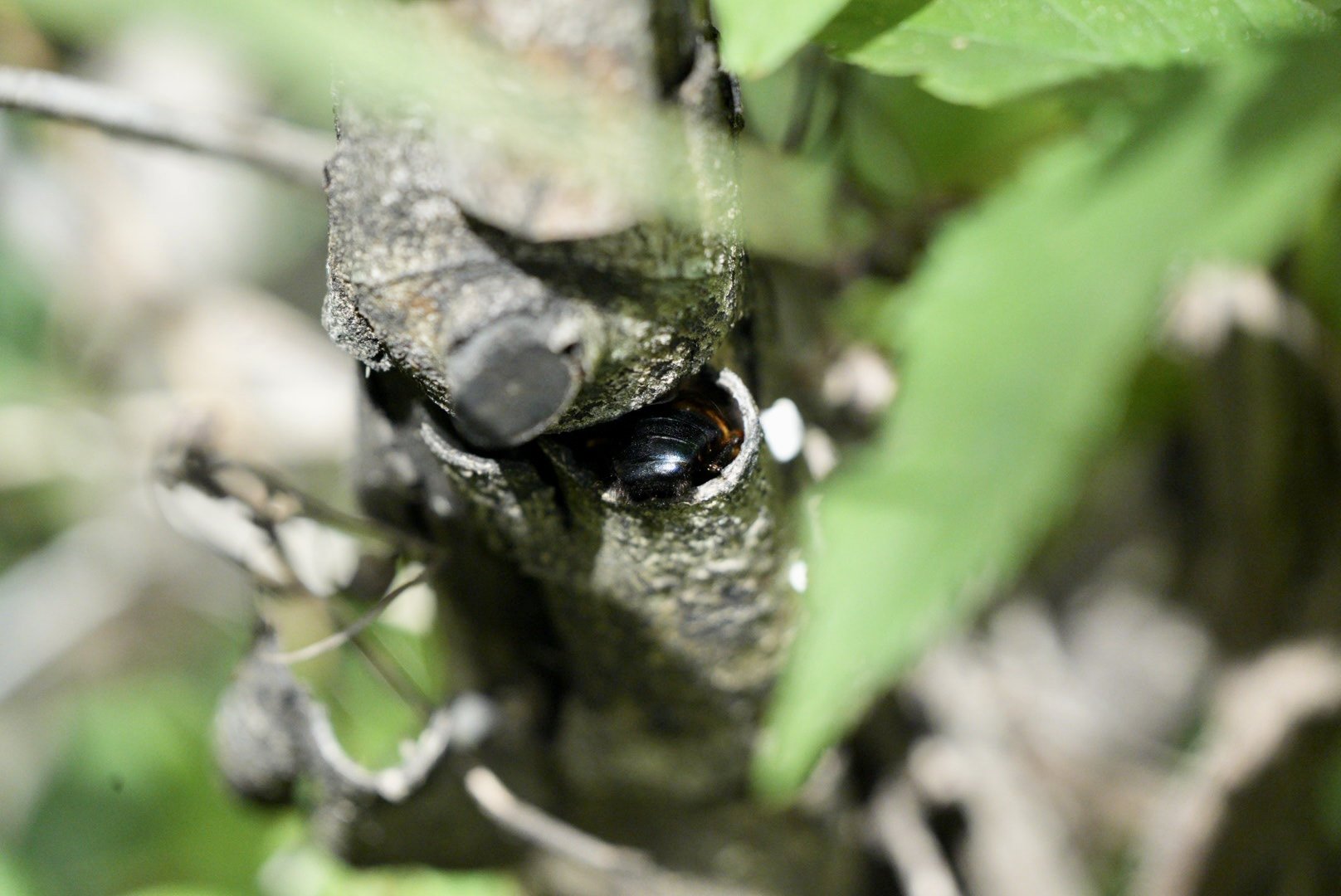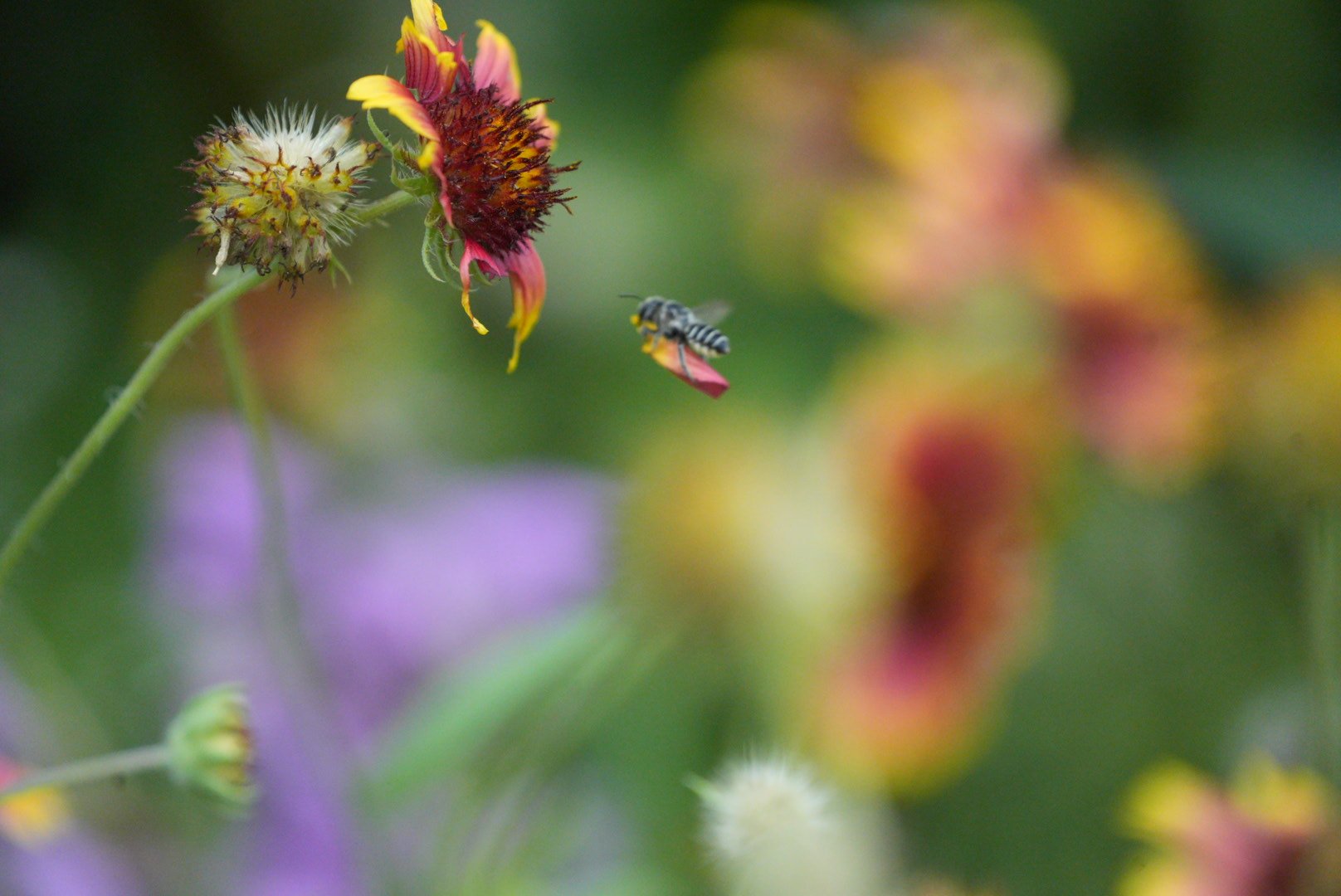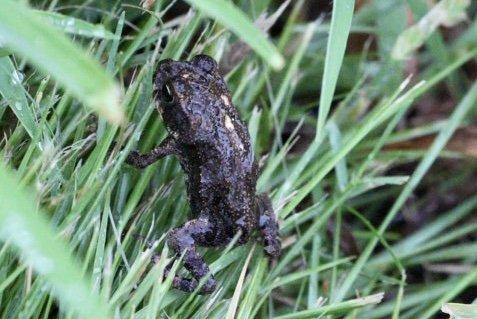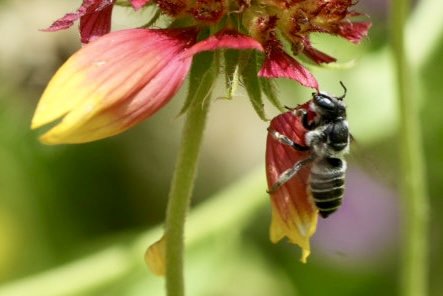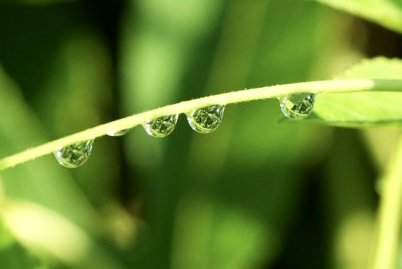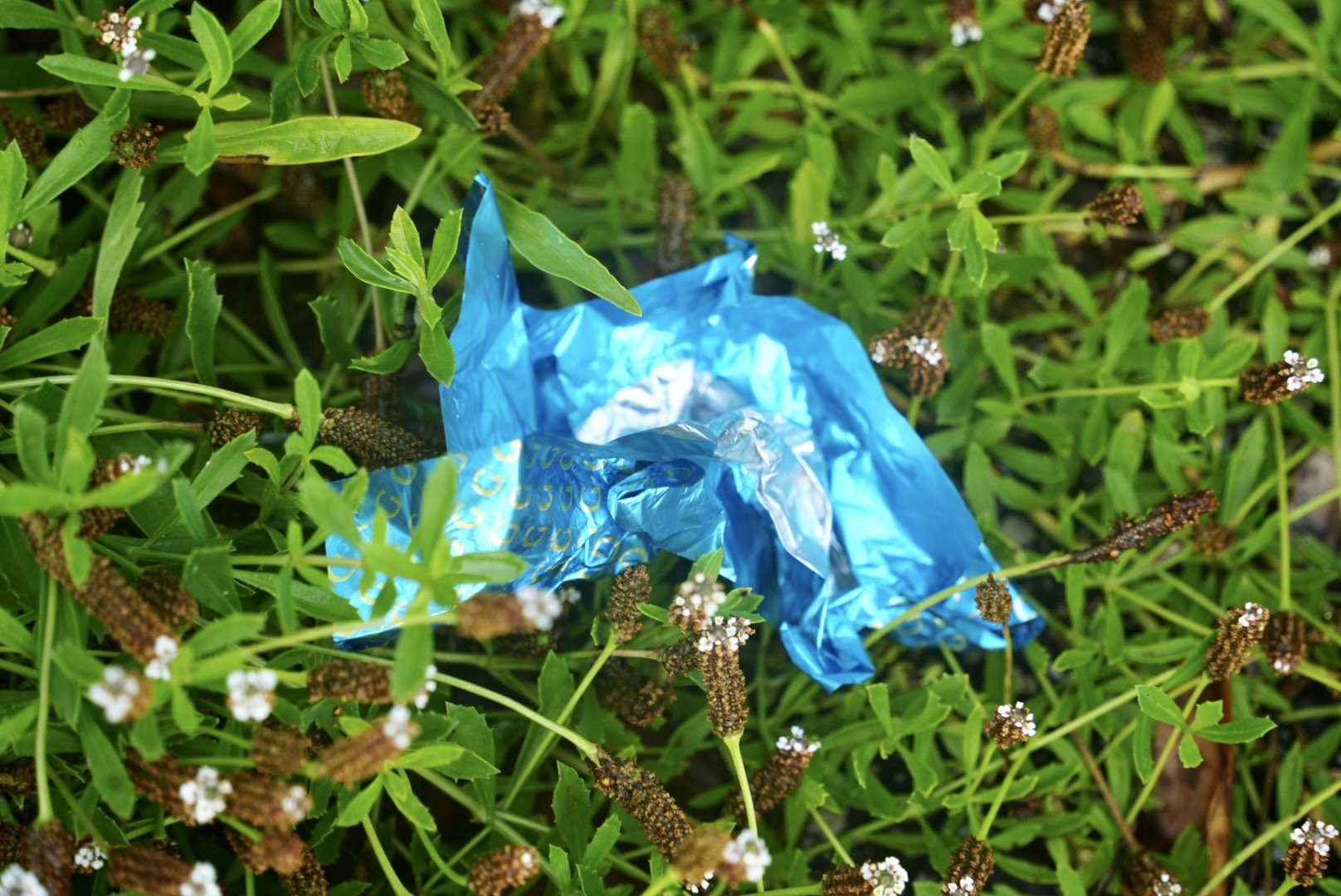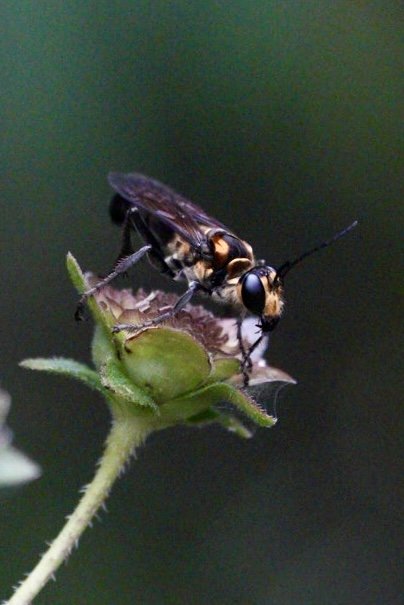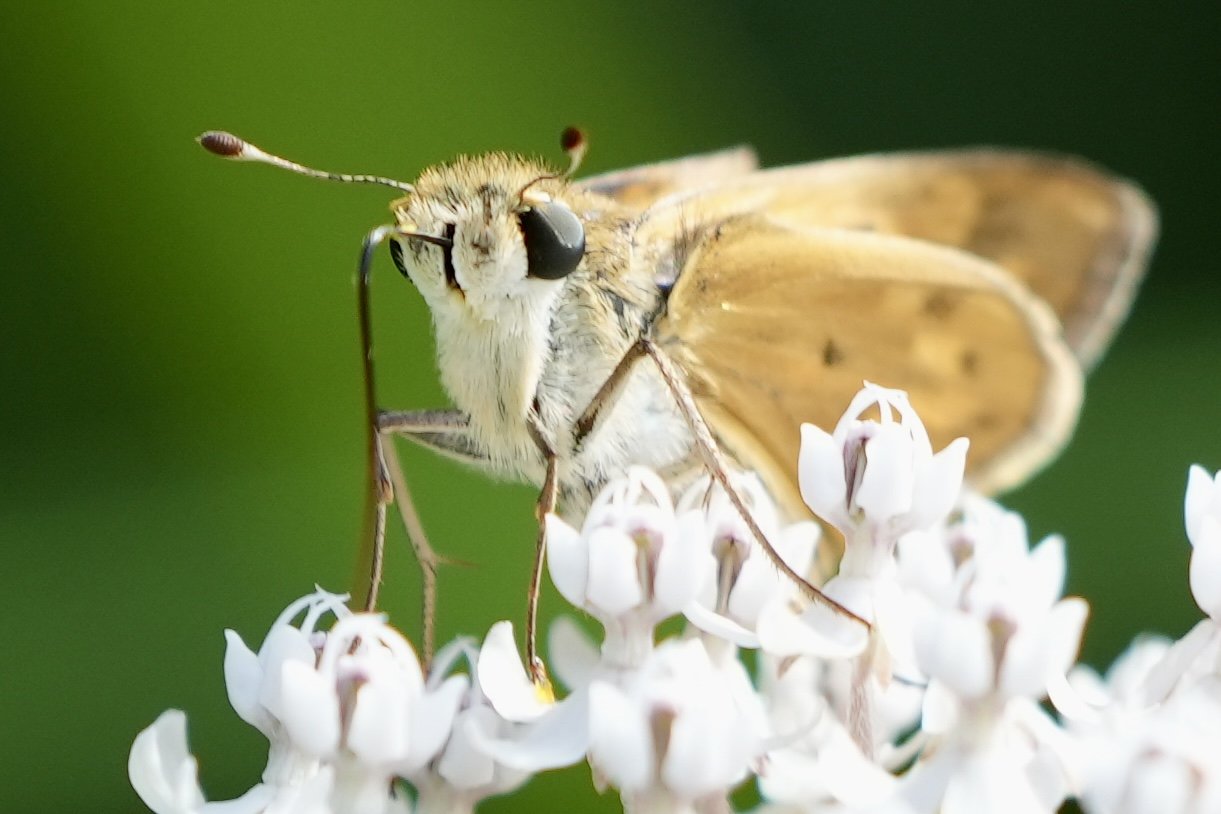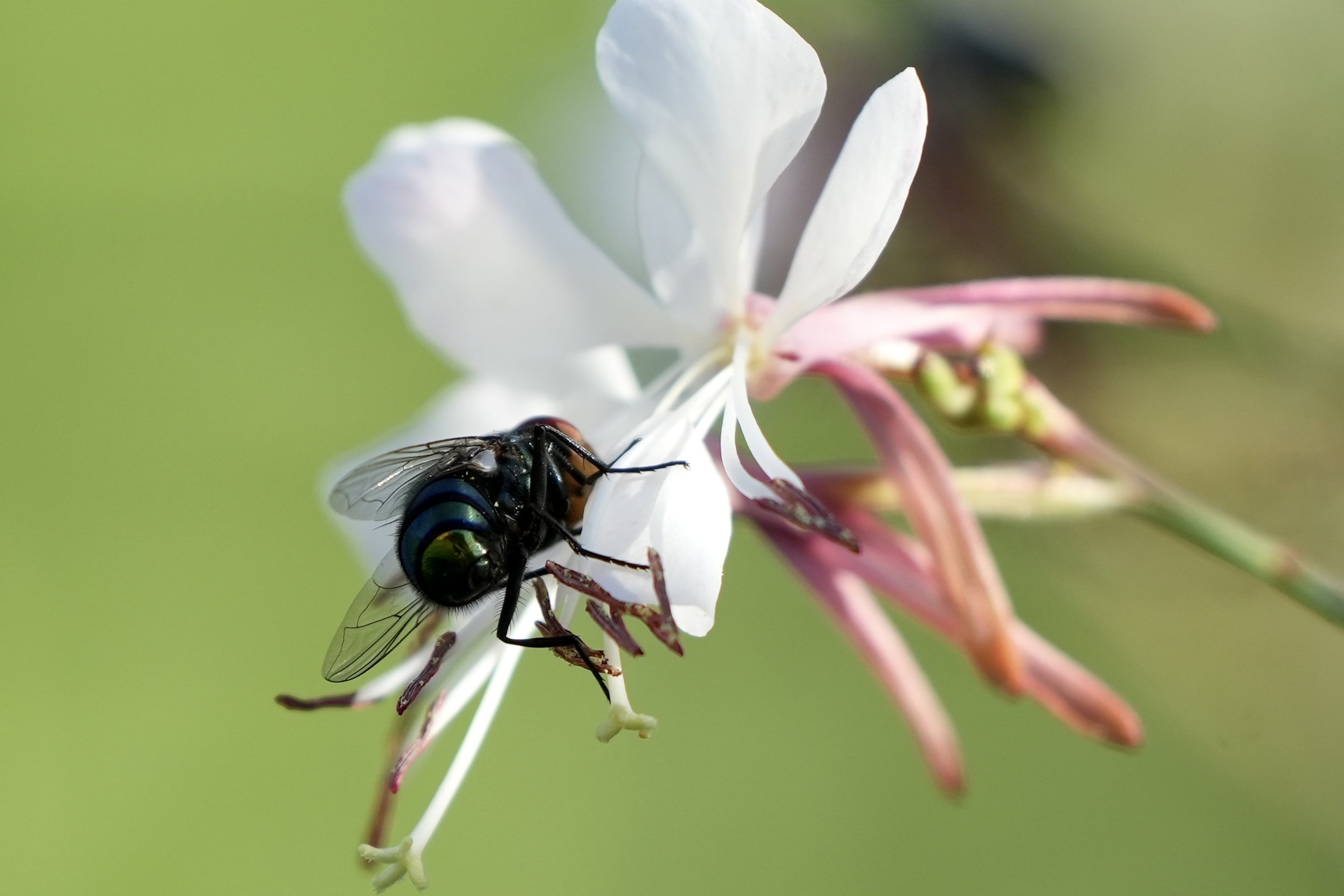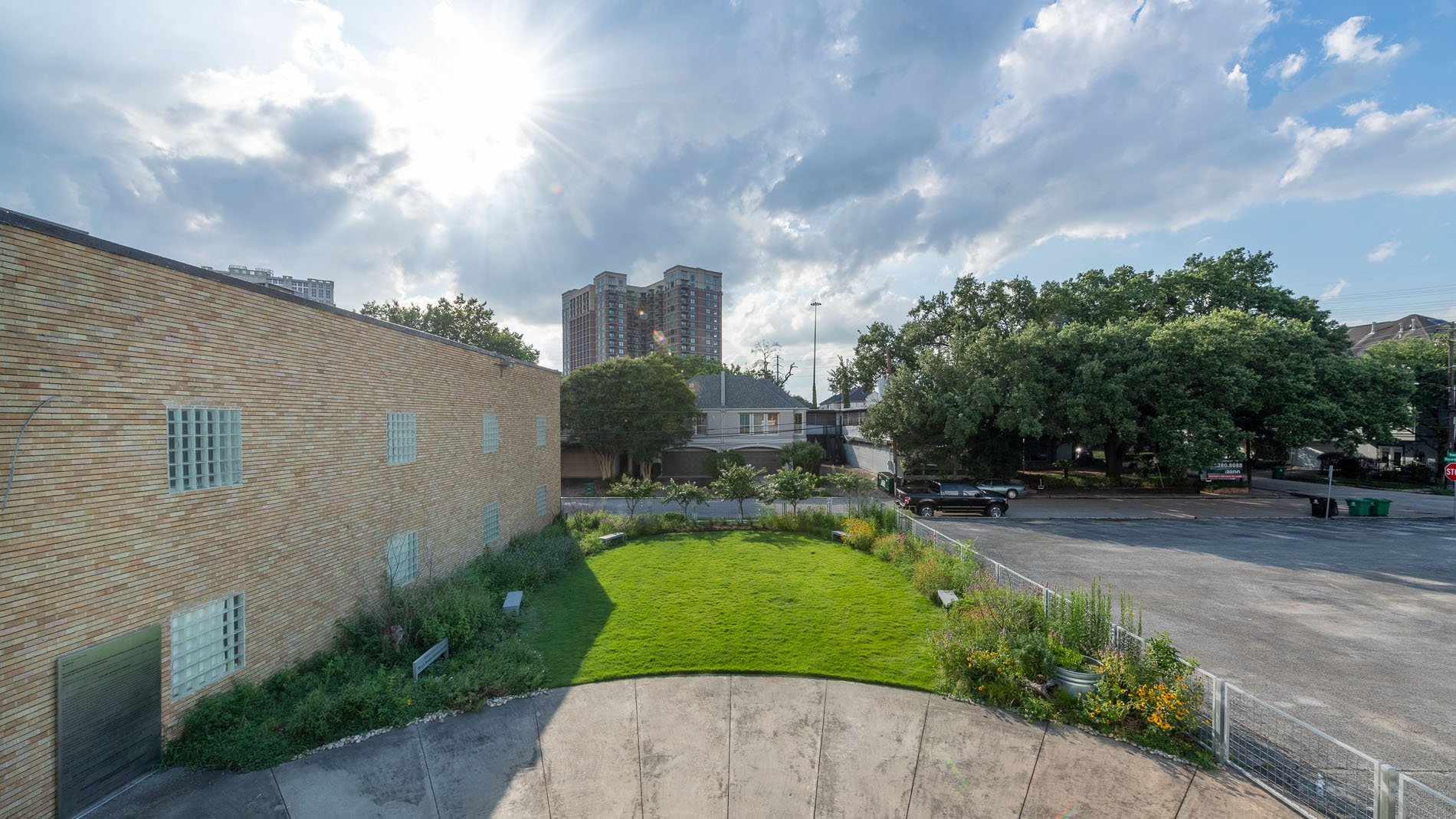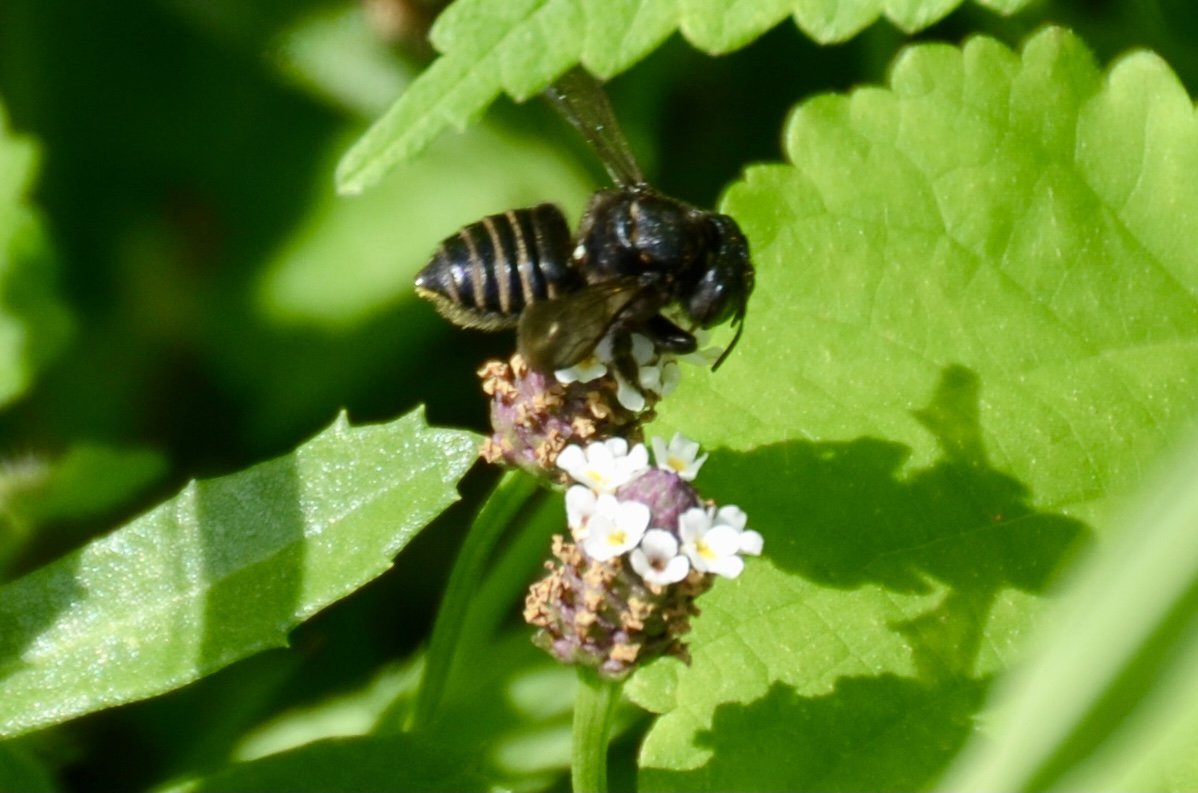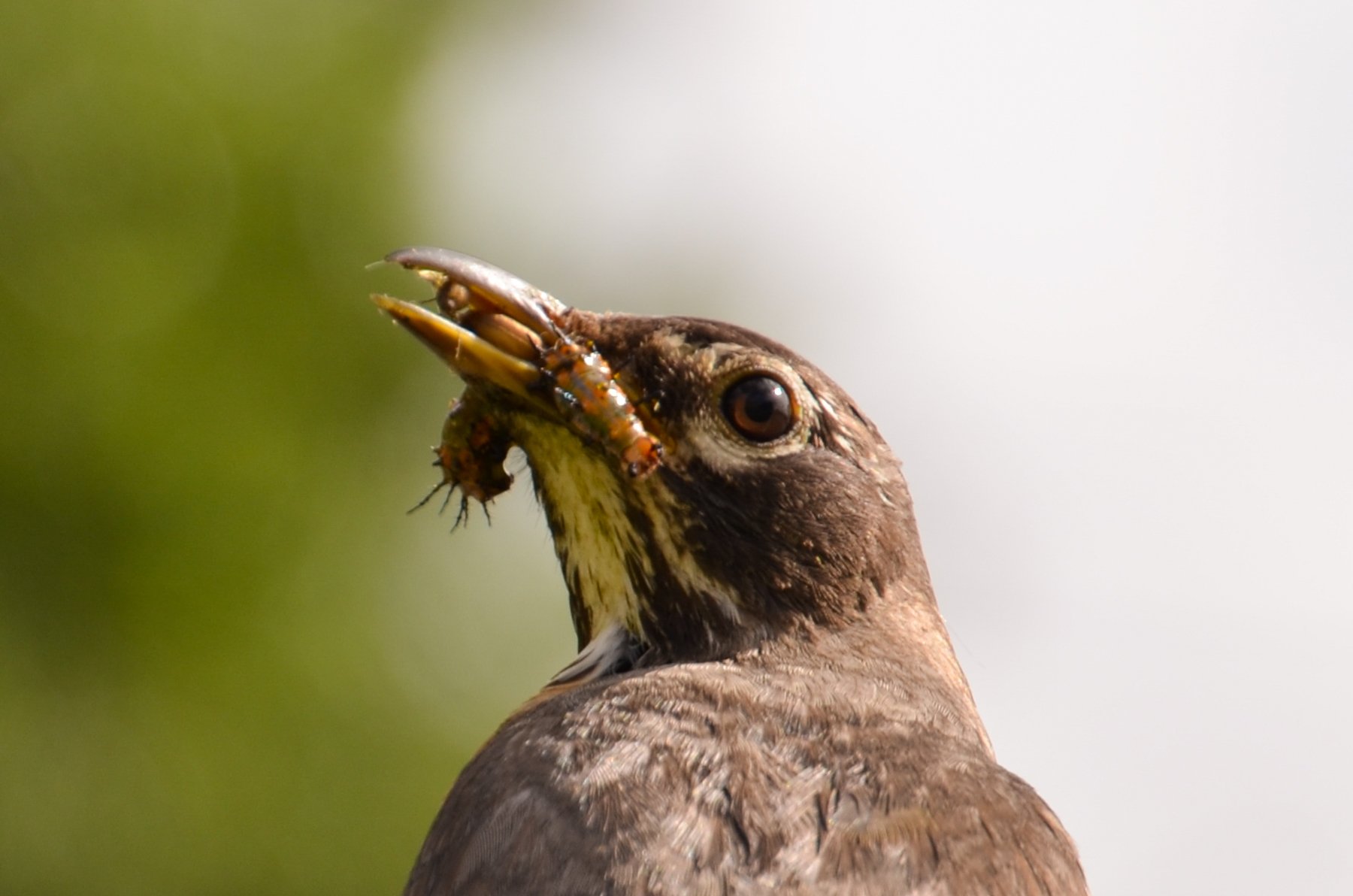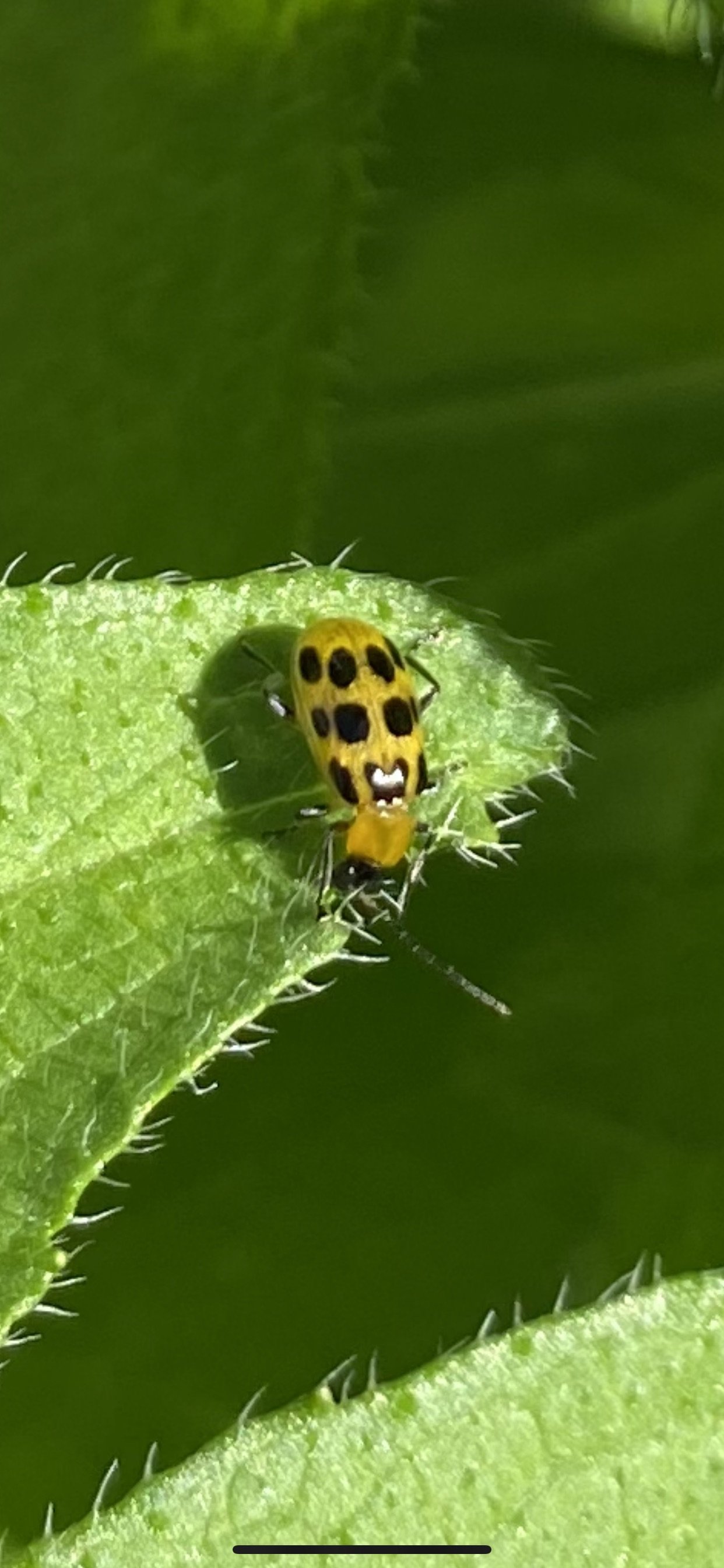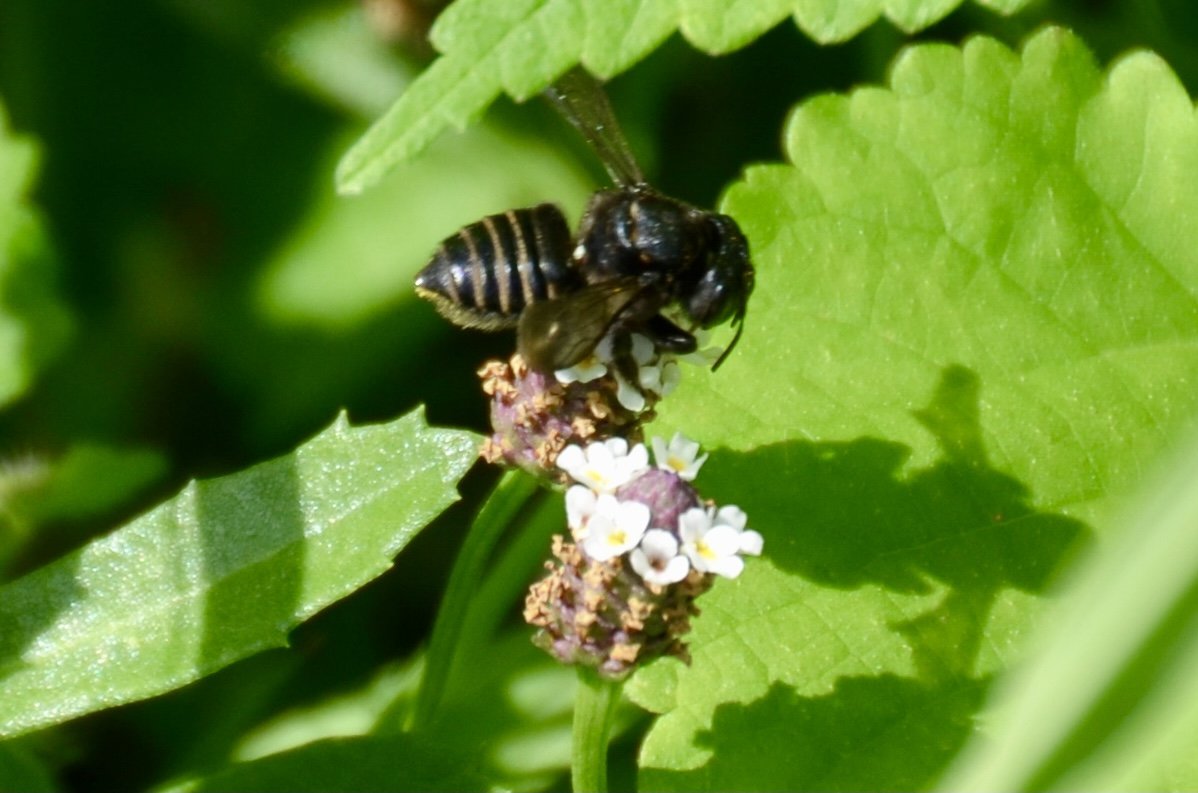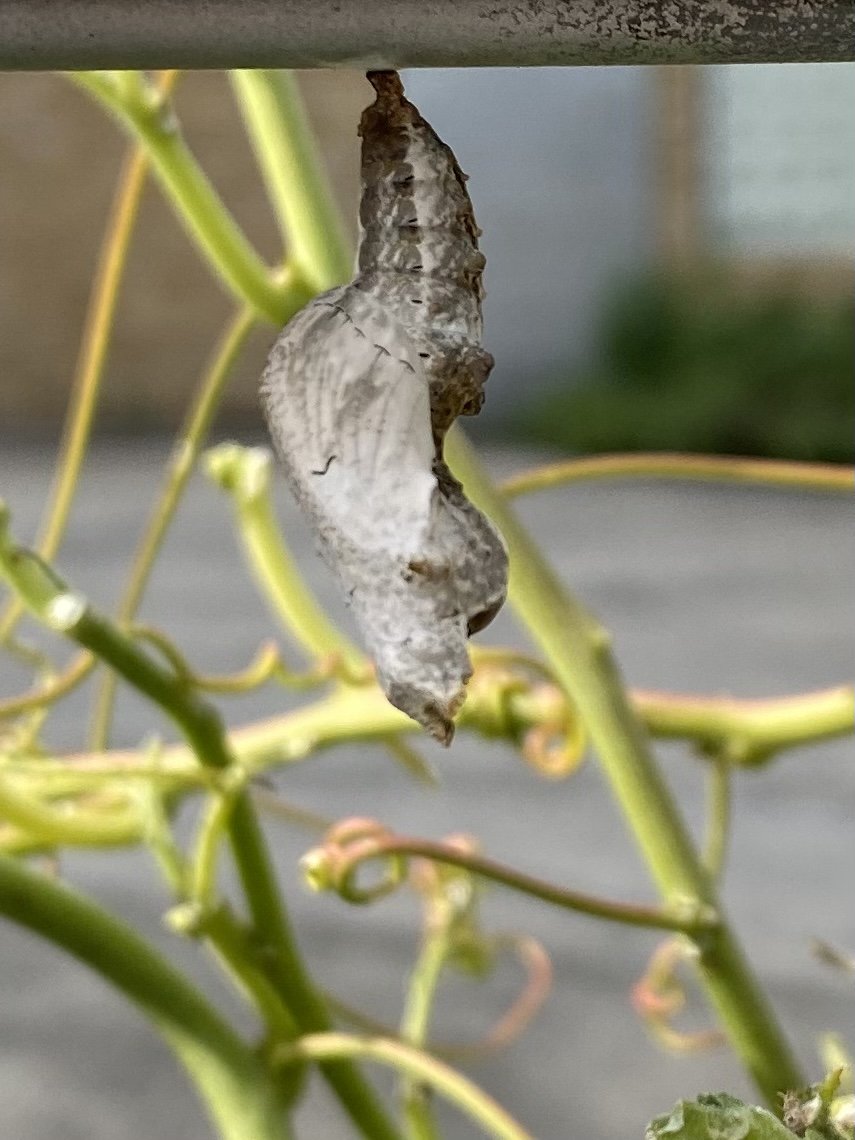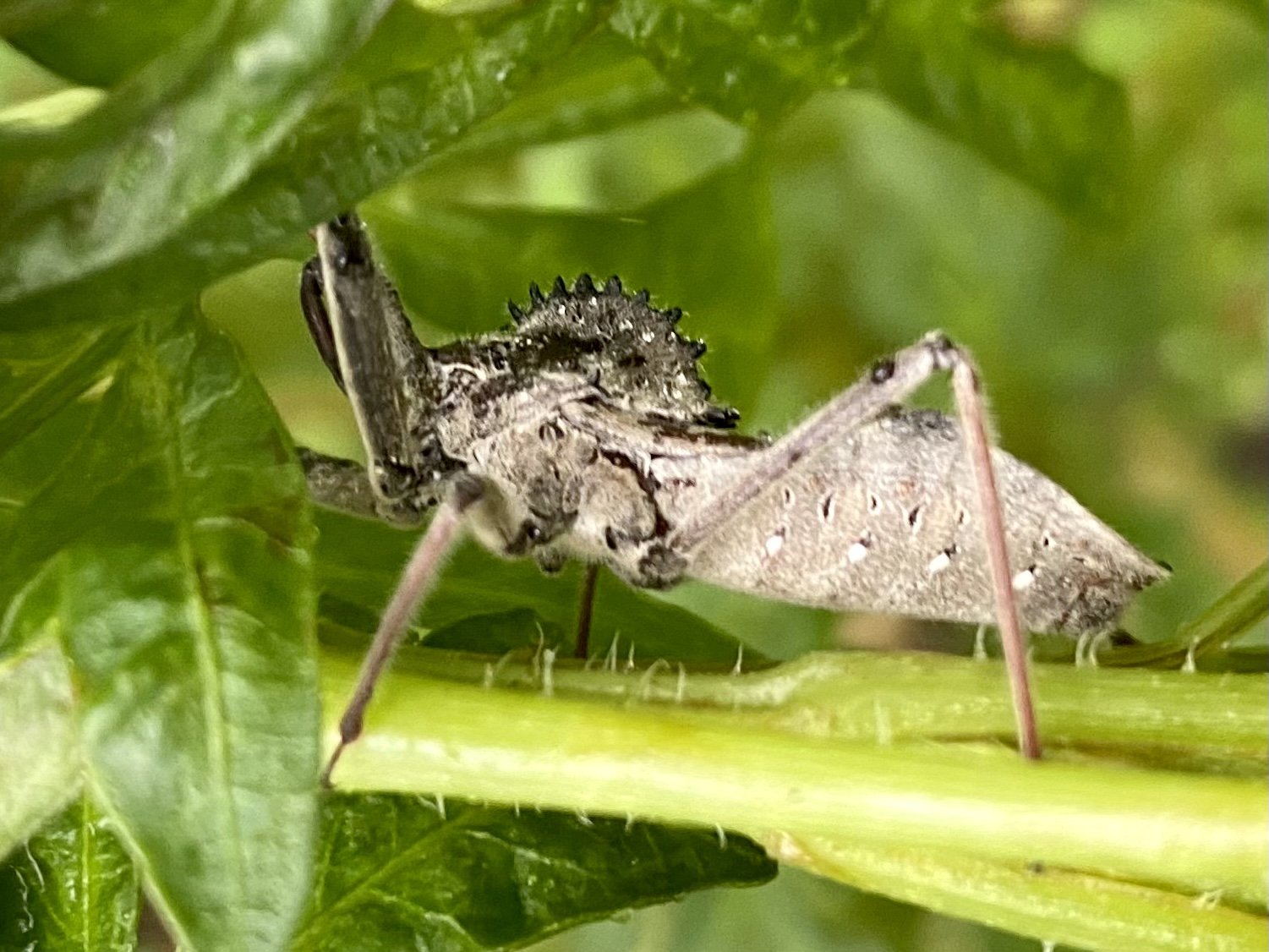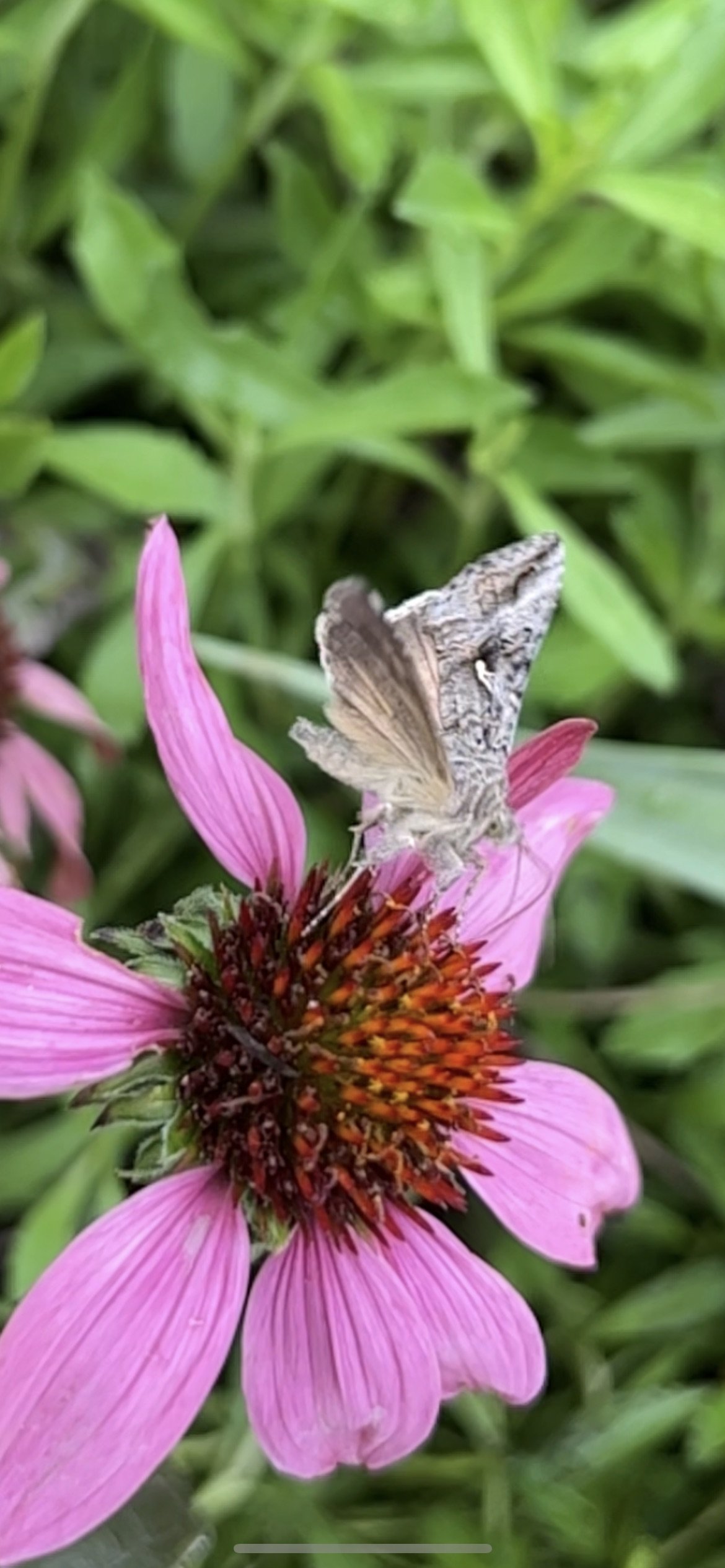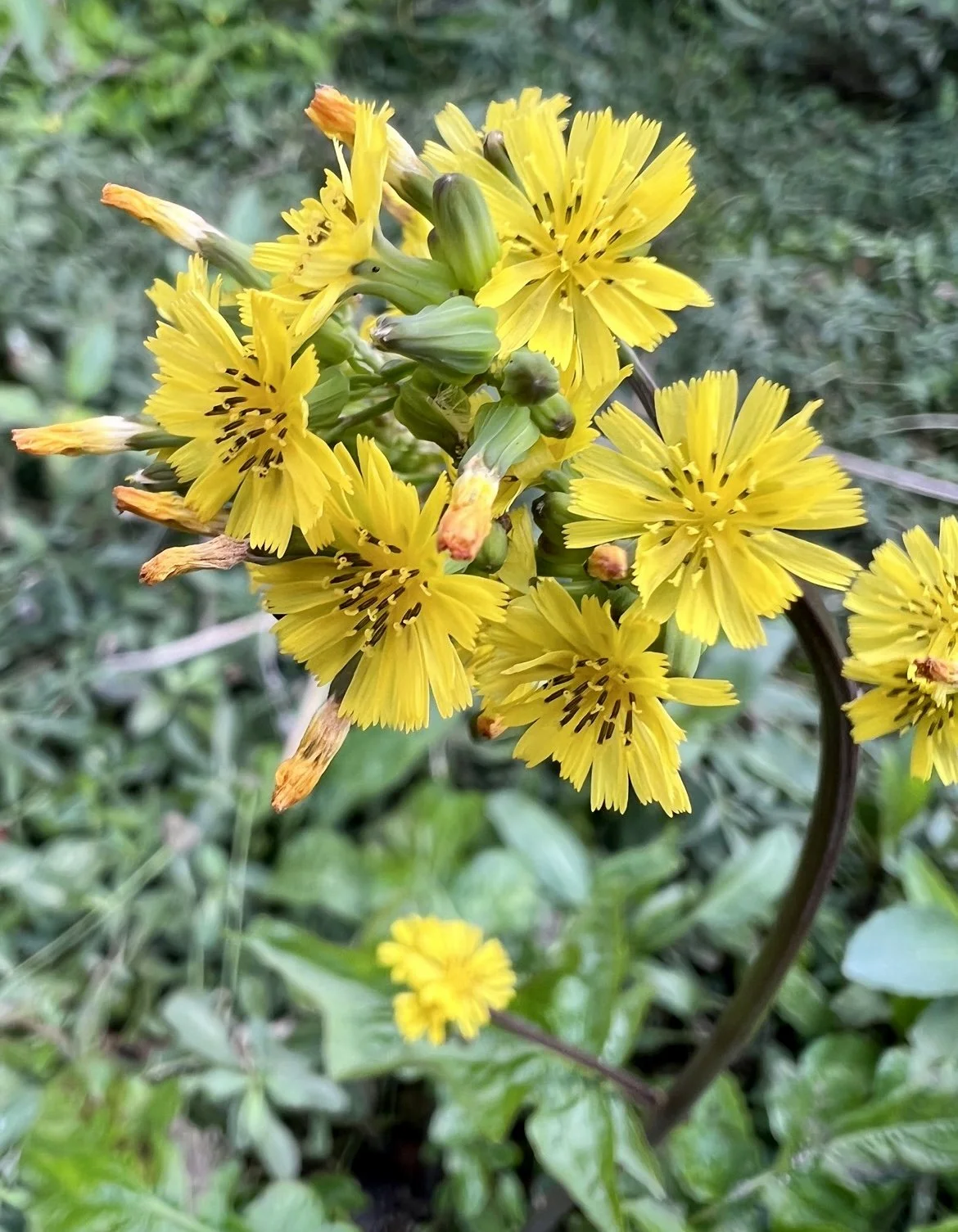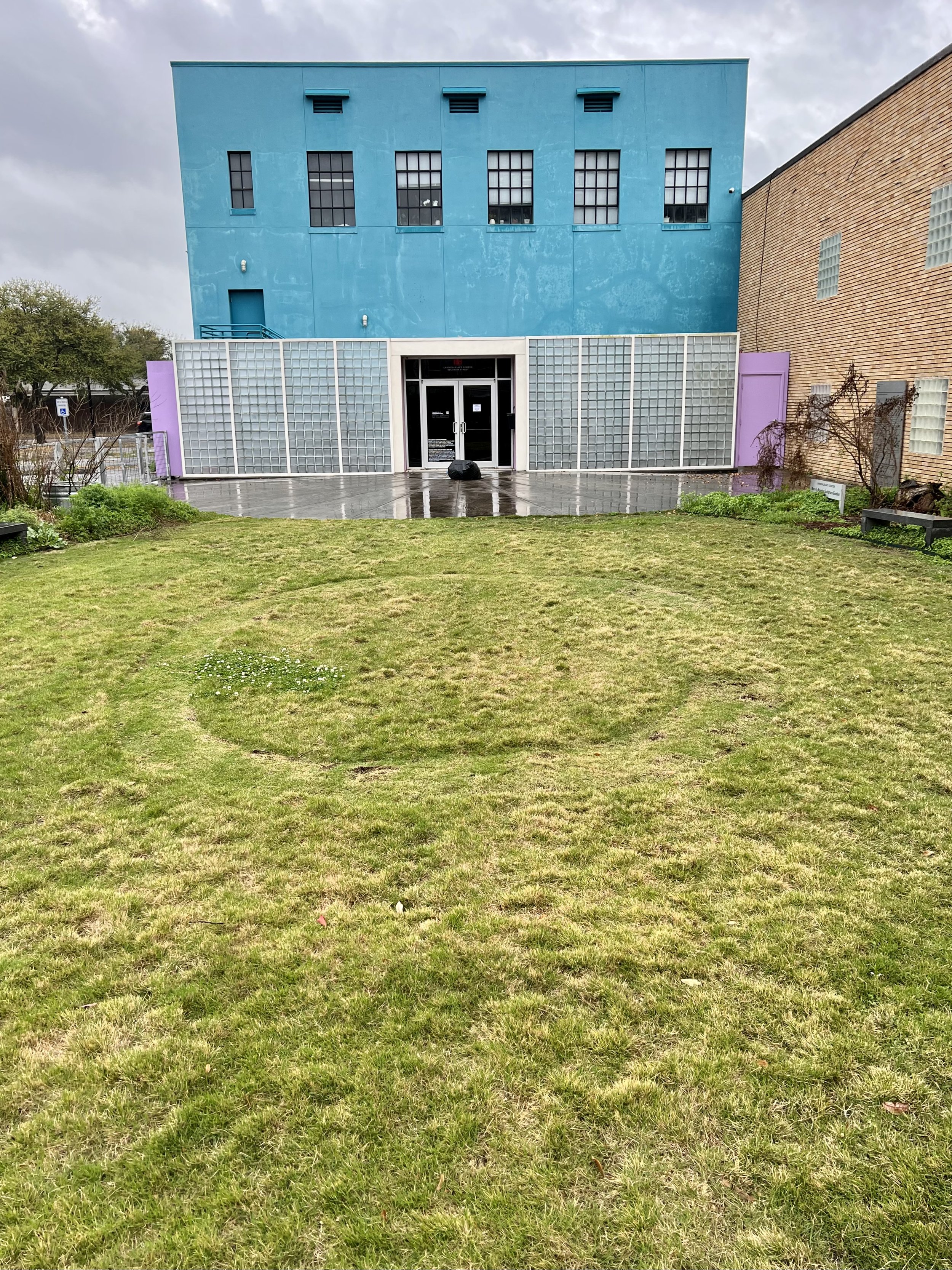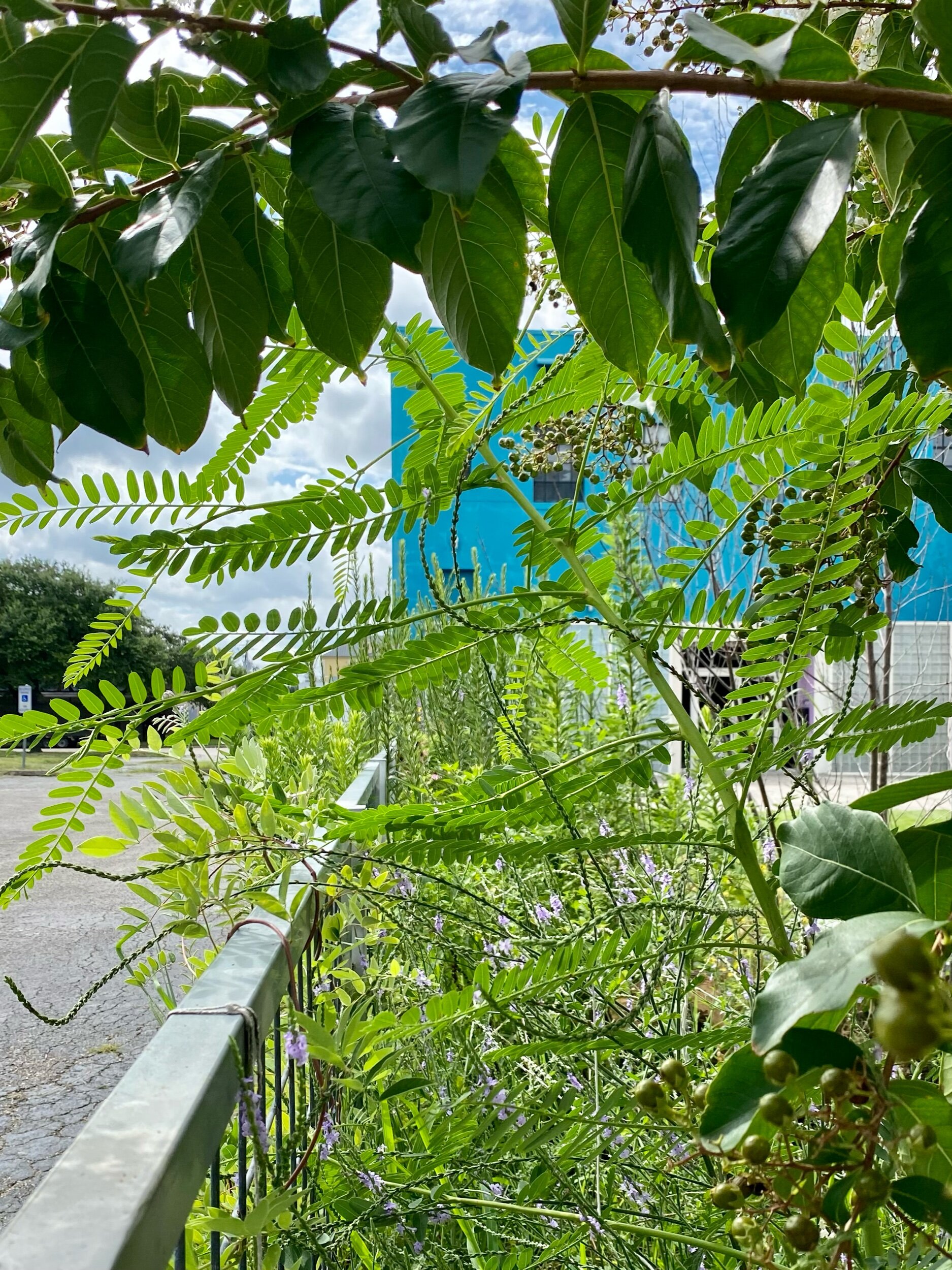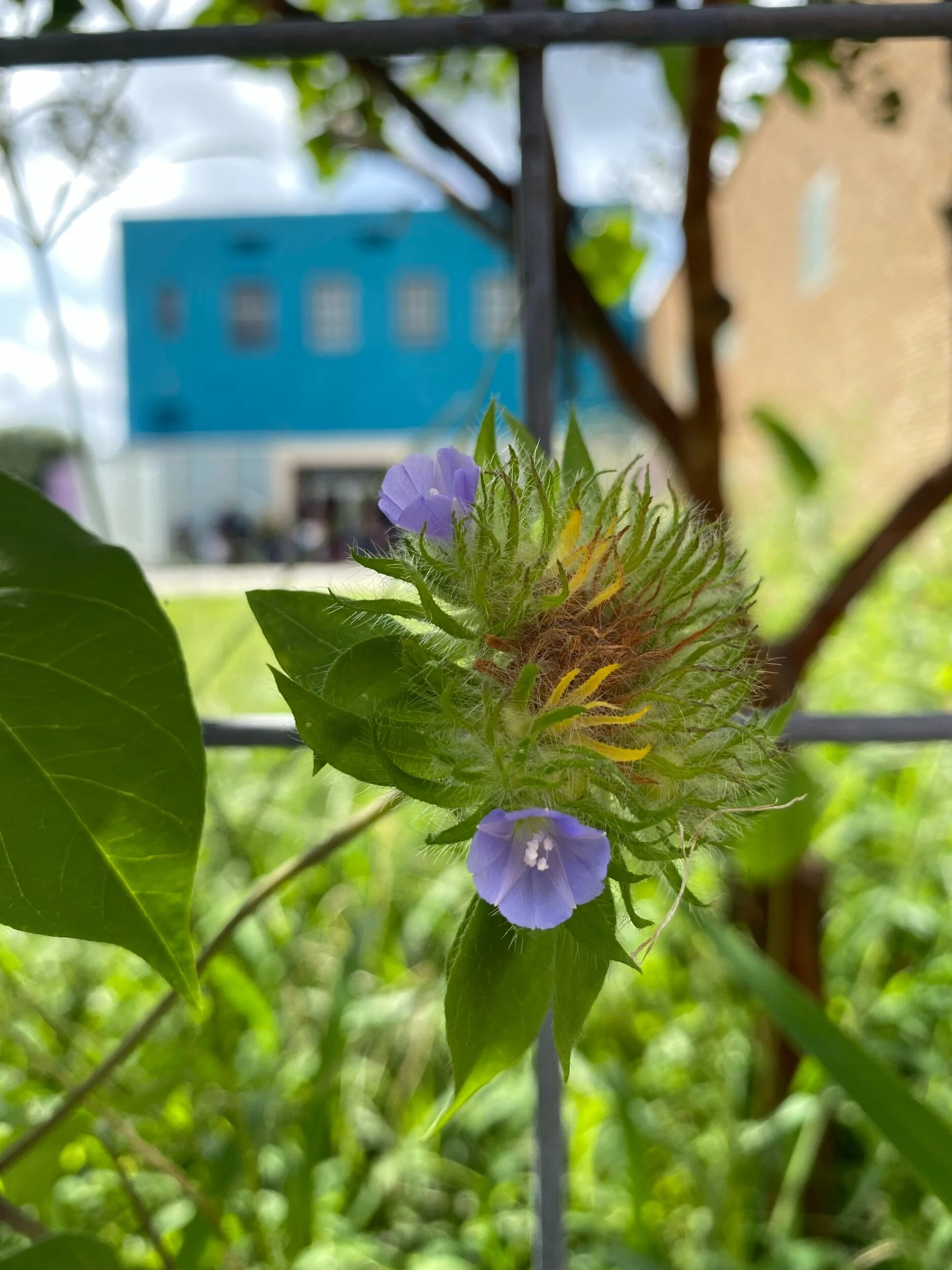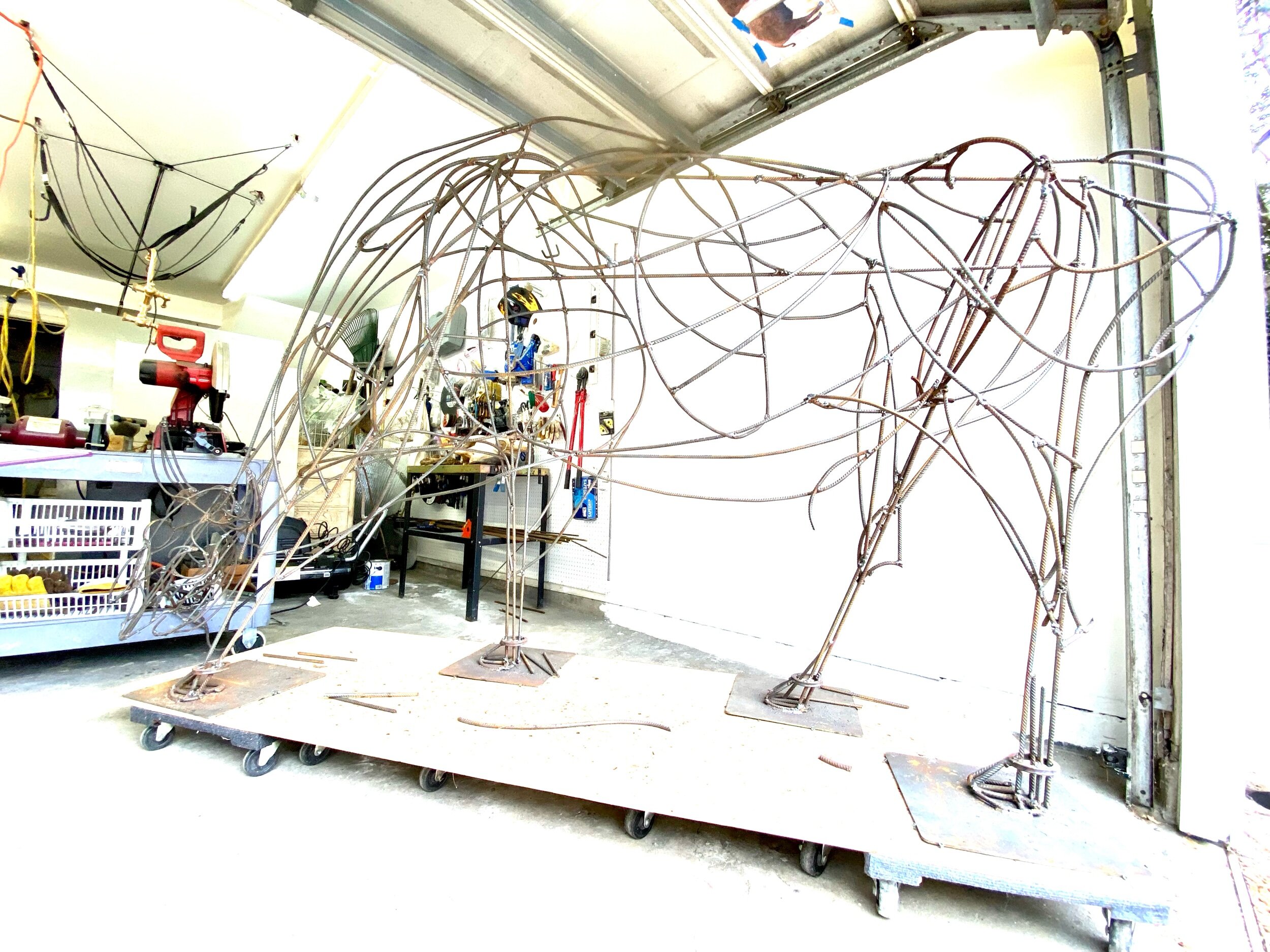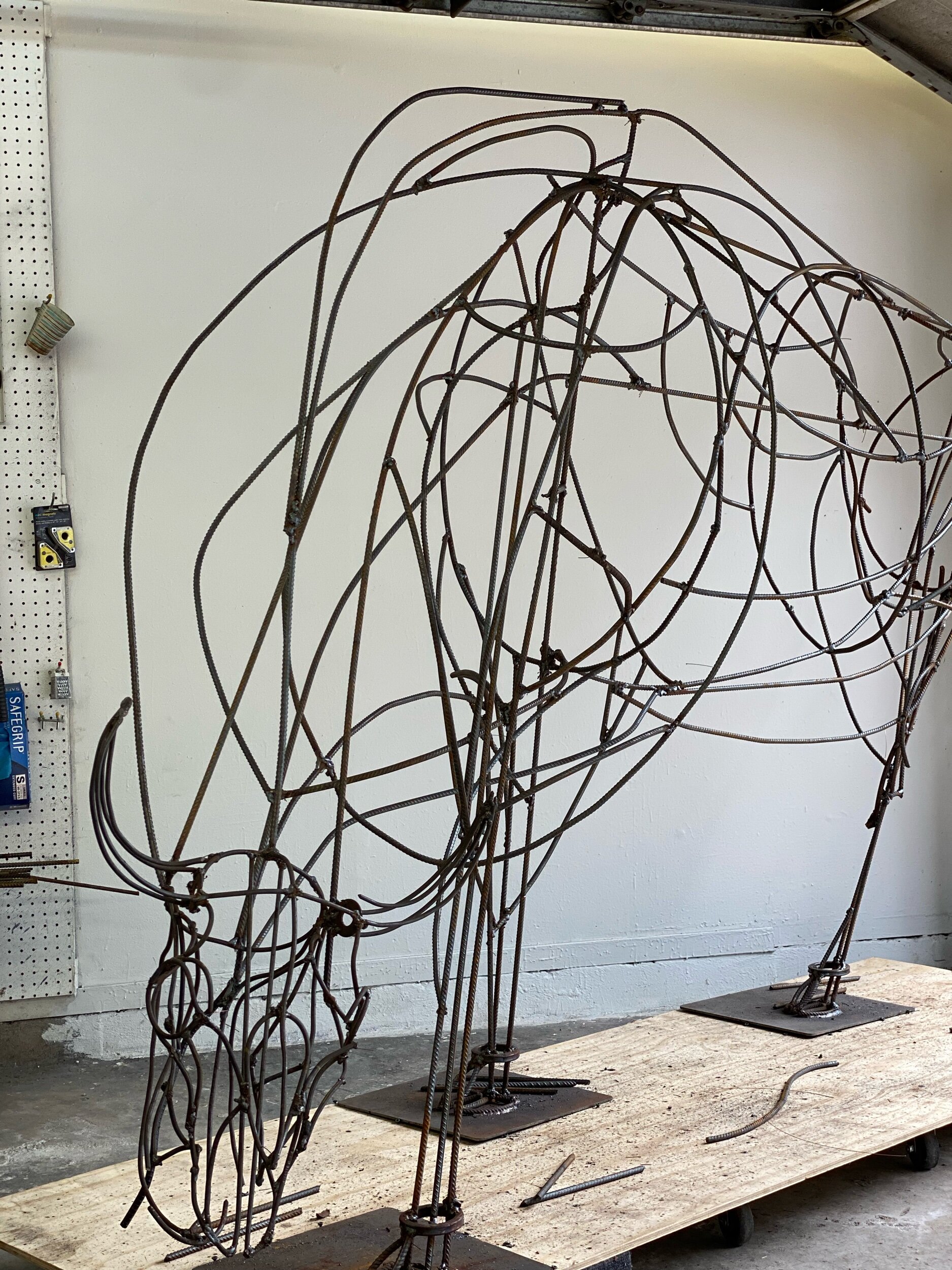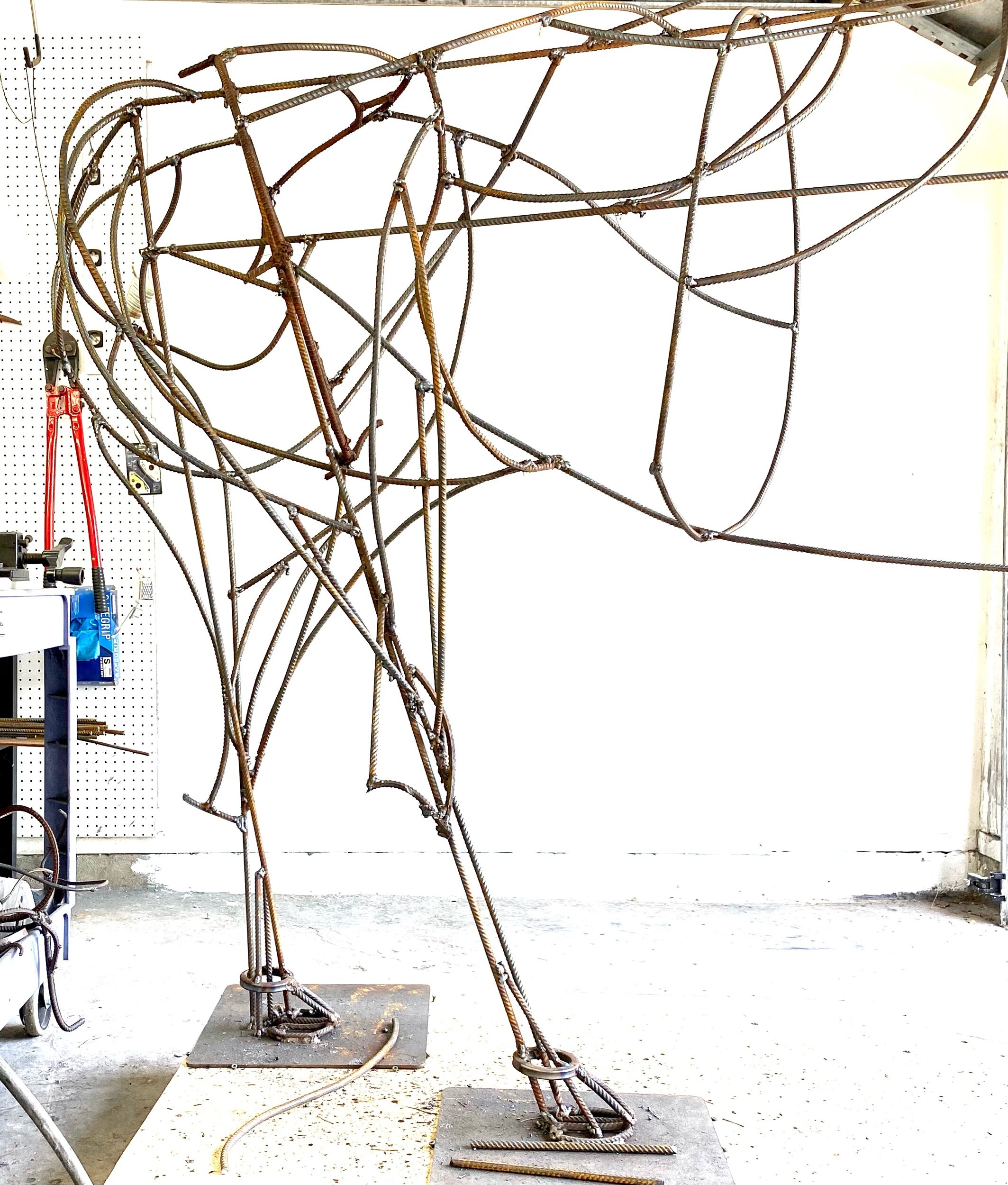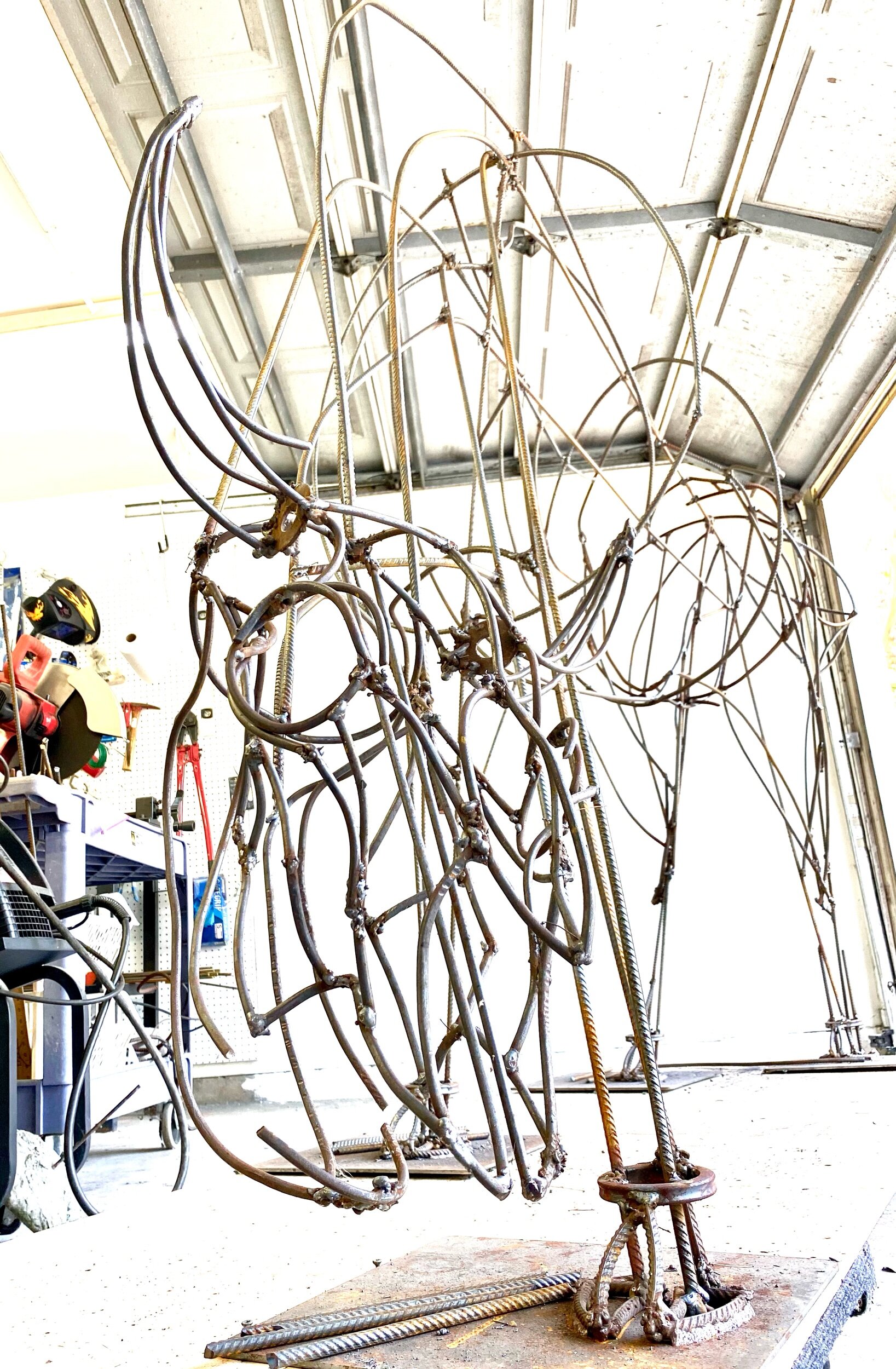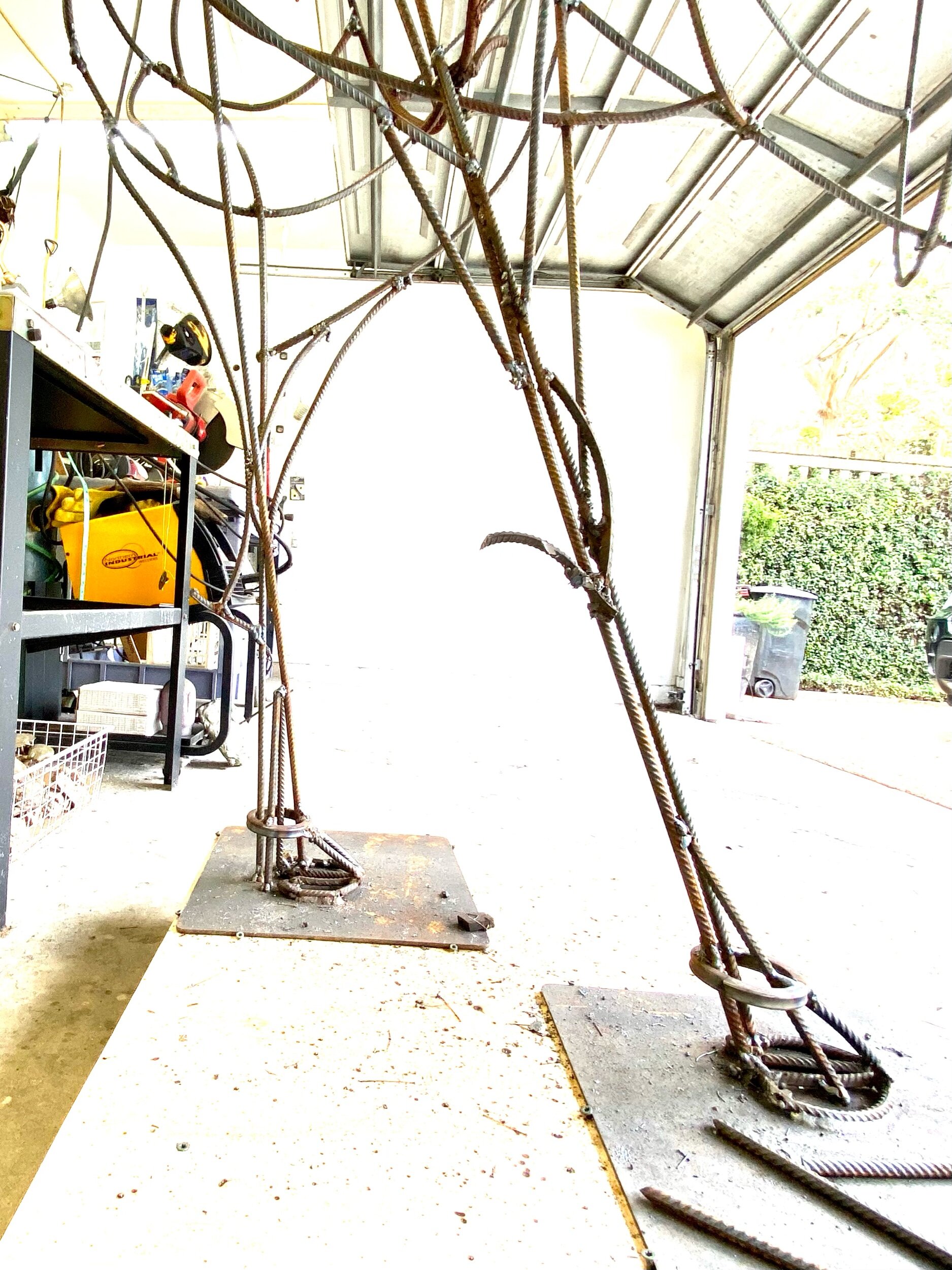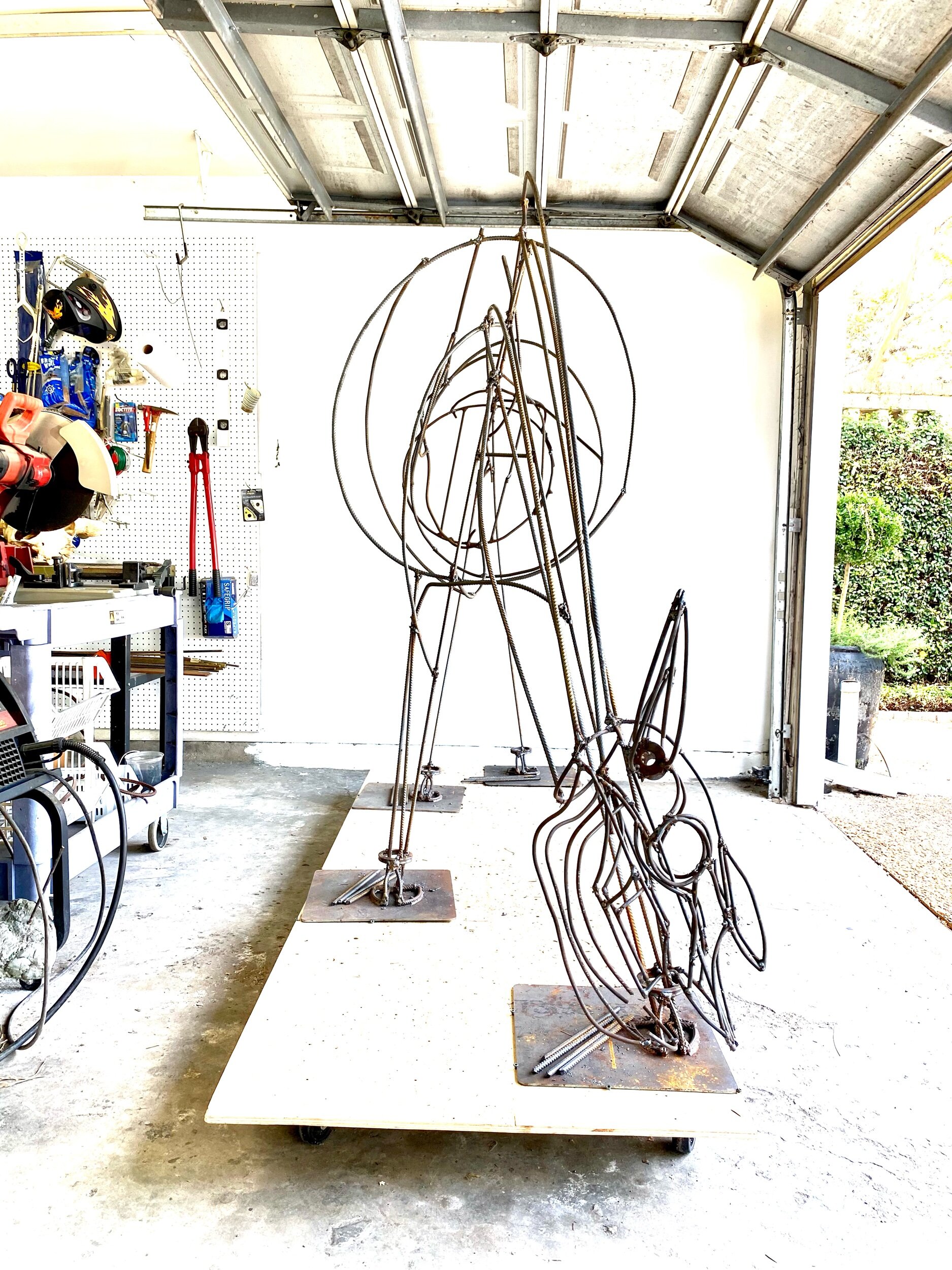What would the next twelve months look like?
A two-year-old can be feisty, or would it be more like a rebellious teenager coming into its sexuality?
April of 2021, I started installing the plant material in “Symbiosis.” Seeing, hearing and smelling the transformation has been a gift. This past spring marked the first anniversary. This post celebrates the relationships and natural systems I have documented from the first anniversary through mid-August.
Keep in mind that in the summer of 2020, when I agreed to install a site specific living sculpture, I went every day to observe the space. Sitting and looking — observational research is a big part of my work.
How did it function in the ecosystem? The mowed nonnative zoysia turf grass was neat within its “borders.” The nonnative shrubs and plants were in aligned rows amongst compressed dirt and it was static. As the summer days warmed the bare spaces, the rising heat never created any movement in the garden. It was designed in rows and easy to maintain with gas-powered mowers and edgers. The first soil test revealed that the garden was void of life. The lower food chain of earthworms and grubs was absent. That explained why the birds flew by without landing. There was nothing for them to forage or seek shelter from predators. It did not soak up much water and sequestered little carbon. Lawndale’s Sculpture Garden was a dysfunctional plot of earth. It was green but not part of the coastal prairie ecosystem.
In a sea of Midtown asphalt and groomed properties in April of 2021, I questioned; would any wildlife find the small space? Failure was possible.
Nature was undeniably resilient in year one. Symbiosis was a living sculpture, a functioning part of the coastal prairie and the New World. The installation was not land art; it was a living ecosystem. It regenerated life.
On Mother’s day after the first big rain, the pond was full of white green treefrog eggs. The relationship between amphibians and clean water and important in building the lower food chain and keeping it in balance. for more details see the post Symbiosis — Green Treefrog Eggs.
Cricotopus rests on the Lawndale Art Centers building. This image is symbolic of a nonprofit art institution’s commitment to it's relationship with the natural world. Hopefully it will inspire others.
Large carpenter bee on a trumpet vine bloom.
Mutation of a rudbeckia hirta. A reminder that being different is beautiful.
the chemical free trough pond provides a habitat for toads to mate and leave their eggs. The tadpoles in return eat algae keeping the water clear and mosquito larvae. #social sculpture.
White-striped longtail enjoying a Rudebeckia hirta bloom.
Anole asserts his dominance on the trunk of a dead olive tree.
Ischnura hastata Citrine forktail on a frogfrut leaf.
Blue dock beetle enjoying the nutrition of a volunteer plant.
Spilosoma Virginia on a Rosinweed sunflower leaf.
Cricotopus Non biting midge on Rosinweed leaf.
Hippodamia convergens convergent lady beetle, on a volunteer plant.
unknown - But interesting
Celithemis fasciata and frogfruit.
Native bee _________ and Rosinseed sunflower.
Repipta taurus , Red bull assassin bug and painted blanket leaf.
Dolba hyloeus pawpaw sphinx and fall bedient plant
the perfect match a native carpenter bee’s body has evolved over the ages to fit the Passiflora incarnata perfectly.
Libellulidae- skimmer and docks. I often find skimmers perched on this past dried docks. They have a strong bond.
Mother Mockingbird feeding juvenile a tiny toad.
Juvenile Mockingbird perched on the manmade fence.
great blue skimmer (is a dragonfly) and the spent thimble flower.
2 Leafcutter bees mating.
2 Leafcutter bees mating and a spent painted blanket bloom.
Atalopedes campestris (called sachem in the United States and Canada) is a small grass skipper butterfly and frog fruit.
Another view
Hemiargus_ceraunus and frogdruit.
Umbrella paper wasp and spent sunflower.
Paper wasp and passion flower. PLANTS CALL WASPS TO THE RESCUE WITH AN AROMA THE INSECTS LOVE. This is a special relationship.
More (green eyed) leaf cutter bees mating again on spent painted blanket bloom.
Male Eastern Carpenter bee- check out those big green eyes and fall obedient plant.
Sphex Digger wasp. On passiflora incarnata
Obscure Bird Grasshopper shaded by the leaves of Turks cap.
Battus philenor, the pipevine swallowtail or blue swallowtail and a morning glory vine.
Gulf fritillery butterfly and a passiflora incarnate
Dolba hyloeus (pawpaw sphinx) is a moth of the family Sphingidae and a fall obedient bloom.
Follow up post coming soon
Female common Whitetail skipper and a dried stem of a Rosin weed sunflower.
Leafcutter native bee and frogfruit.
Spiderweb that and dew . Does the quenching dew lure prey into the spiders web. I see a relationship between the spider and Earth’s closed water system.
Leafcutter bee and blanket flower.
Leafcutter bee with a petal of a blanket flower Gaillardia pulchella. They use the petals to build their nests.
American toad And Earth’s closed water system.
American toad out for a stroll during the rain.
Plushback fly and Salvia azure.
Another species of leadcutter bee cutting a bllanket flowr petal.
Swallowtail butterfly and white veined morning glory.
Swallowtail butterfly depositing an egg on white veined morning glory. Follow up post coming soin.
Jumping spider and fall obedient plant.
Plushback fly and blue salvia
The relationship between rainwater or dew and plants is a crucial part of any ecosystem. In this case the few is is on a stem of crabgrass. If you run your fingers down the stem you will notice the texture that slows water from running off it's surface too fast.
Dew and stems
Carpenter bee and Salvia azure
I have noticed that plant material on the edges of symbiosis stops garbage from blowing from the convenience store. I see this as another way plants are in partnership with our various ocean.
Anole safely camouflaged in the chaotic lines of the vines mixed with a diversity of plant stems.
Juvenile mocking bird on a dead olive tree branch. I saw about six of them hiding in the American beautyberry after the rain. Now that the installation is a year old, it is getting height and layers. This added heights provides the birds with more protection, berries and perches for hunting small prey.
Stink bug on American beauty very.
Carpenter bee getting a back rub wile collecting nectar and pollen on a purple passion flower.
Sphex habenus, Golden-reined Digger Wasp and Rosin weed sunflower.
Sunlight nesting in Rattlesnake master.
?
Subtribe Hesperiina And milkweed.
Subtribe Hesperiina And frogfruit
? Bee on Rattlesnake master
roseate skimmer and fall obedient plant.
Skipper on bloom less salvia stem.
New World Checkered skipper and everybody’s buddy frog fruit.
Sor ies of fly sleeping in butterfly faea Bush.


